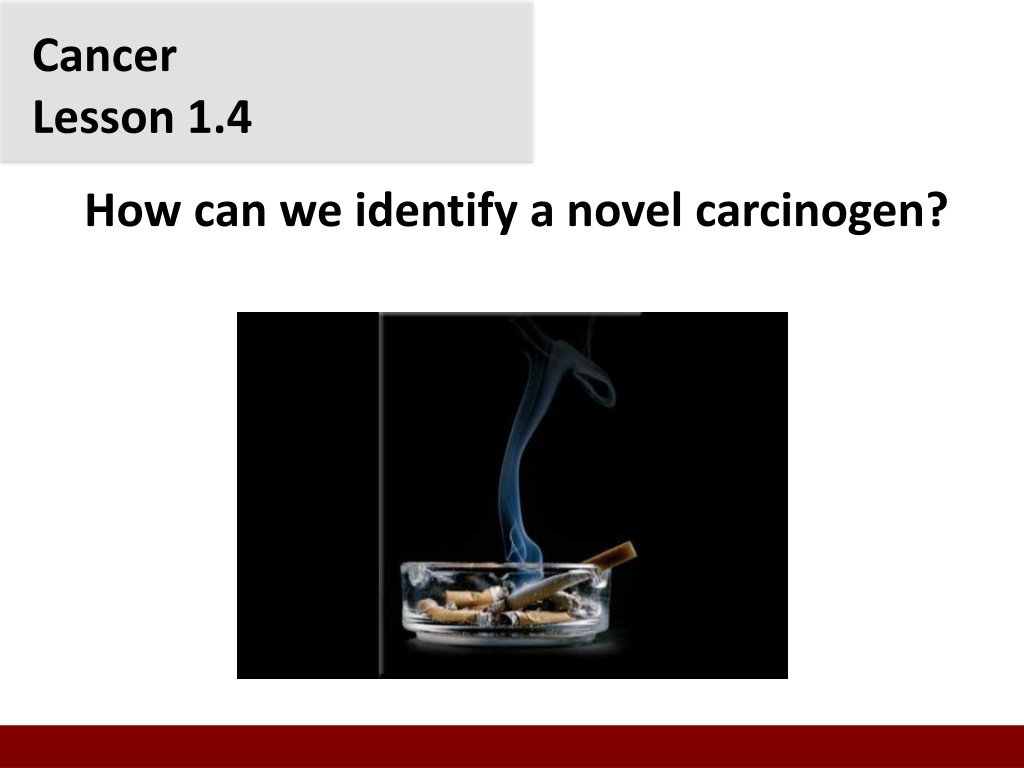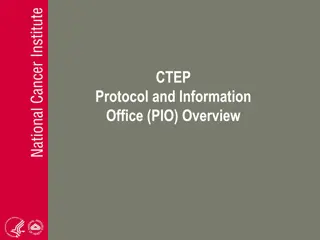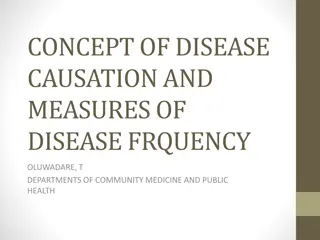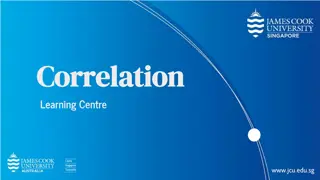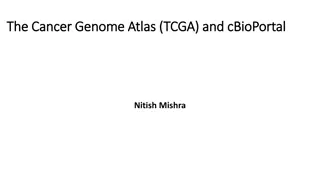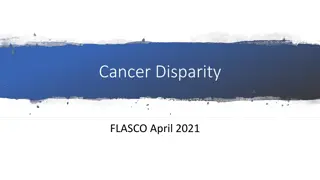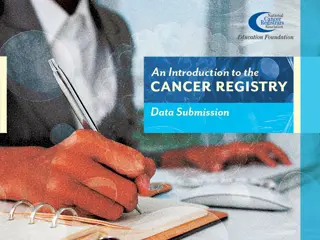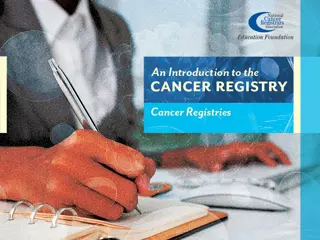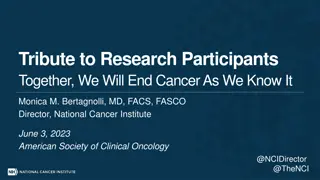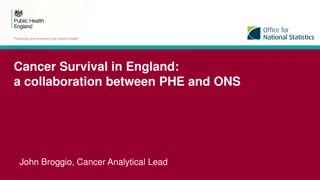Understanding Carcinogens and Causation in Cancer Research
Exploring the identification of novel carcinogens and proving causation in cancer research through examples like the Ames test, Koch's postulates, and distinguishing between causation and correlation. The challenges in attributing cancer causation and the importance of conclusive evidence for behavior changes to prevent cancer are highlighted.
Download Presentation

Please find below an Image/Link to download the presentation.
The content on the website is provided AS IS for your information and personal use only. It may not be sold, licensed, or shared on other websites without obtaining consent from the author. Download presentation by click this link. If you encounter any issues during the download, it is possible that the publisher has removed the file from their server.
E N D
Presentation Transcript
Cancer Lesson 1.4 How can we identify a novel carcinogen?
Do Now What did Bruce Ames say about how useful the Ames test is at identifying carcinogens? How would you prove HPV causes cervical cancer?
Who was Robert Koch? Robert Koch Identify that there is a disease. Connecting the dots to disease The animal should get the same disease as the original animal Isolate the agent suspected of causing the disease Re-introduce the agent into a healthy animal
Robert Kochs postulates An infectious microbe must: 1. Associate with every case of the disease 2. Be isolated from the sick animal 3. Cause the disease when introduced into a second healthy animal 4. Be the same microbe when re-isolated from the second sick animal. Which of these could we do to show that HPV causes cervical cancer?
Can you give an example of a carcinogen known to cause cancer? Could you use Koch s postulates to prove it? No, because we couldn t isolate the carcinogen from the person, unlike an infectious agent and it would be unethical to use cigarettes to try to produce cancer in a healthy person
What is the major problem if you cant use Koch s postulates to prove causation for a particular carcinogen? If we cannot definitively establish that an agent causes cancer, it is difficult to make the argument that people need to change their behavior to prevent cancer
The problem of causation vs. correlation What is the difference between them? Correlation = relationship between 2 variables Causation = one variable causes a change in the other variable Why is it important?
Determining causation vs. correlation Different types of study: Observational (epidemiological) Ex. How many people in this lung cancer population, smoke? Interventional Ex. How many people in this population who smoke, develop cancer? Randomized control studies Ex. If we randomly give half the people cigarettes to smoke, how many will develop lung cancer compared to the non-smokers Can t do randomized control studies with cancer in humans!
Bradford Hill - wrestling with correlation Hill ran a controlled study showing that cigarette smoking correlated with lung cancer. He could not prove causation by Koch s standards. Observational and Interventional studies cannot prove causation. But by eliminating alternate explanations, he could statistically show causality in complex diseases like cancer. Bradford Hill (1897 1991)
How Hills postulates work Each postulate eliminates alternate explanations. The more postulates fulfilled, the less likely it is to be a correlation, the more likely it is to be causation. Postulates must fulfill scientific rigor.
Hills postulates The relationship between a proposed carcinogen and a cancer must be: Plausible Strong Consistent Specific Coherent Time - Cause has to precede effect Dose - Bigger doses must produce larger effects Different forms of the carcinogen must behave similarly Different circumstances of exposure must give similar results
Hills postulates for cigarette smoking and cancer Smoke is inhaled: cancer is in the lung Plausible Smokers have a 5-10 fold higher risk of lung cancer Strong Two independent studies came up with the same result Consistent Smoke enters mouth & lung. Cancer is in mouth & lung Specific Coherent All studies on tobacco tar give similar results Likelihood of cancer related to time person smokes Time Likelihood of cancer related to amount a person smokes Dose Different forms give same results Painting tobacco tar on the skin also causes cancer Smoking also correlated with lung, lip, throat and esophageal, also exposed to tobacco tar. Different exposure gives same result
Activity: Use Hill s postulates to identify whether the following agents act as carcinogens: HPV and Cervical Cancer Sunbathing and Skin Cancer Cell Phones and Brain Cancer Obesity and Breast Cancer
Wrap up Do Hill s postulates prove causation? From the evidence which relationships do you think are causal? Strong Relationships HPV/Cervical Cancer & Tanning/Skin Cancer Weaker Relationships Obesity/Breast Cancer & Cell Phone/Brain Cancer How many postulates are required to prove causality ? Can t ever prove causality, but the more postulates supported the higher the likelihood Are some postulates more important than others? NO If there is evidence supporting each postulate does that mean the relationship is likely to be causal? No, quality of evidence is important/confounding variables may play a role at any time
The Challenge of Causality If a behavior can be associated with cancer and stopping that behavior can be shown to decrease cancer, then this correlation is effectively equivalent to causation. But if a strong argument can t be made upfront, then it is difficult to get people to change behavior. See reading on tobacco and lung cancer.
Homework Lesson 1.4 Homework - The Case Against Smoking Read the chapter from The Emperor of All Maladies that describes how tobacco companies exploited the challenges of proving causality to avoid regulation. Answer the questions that follow.
